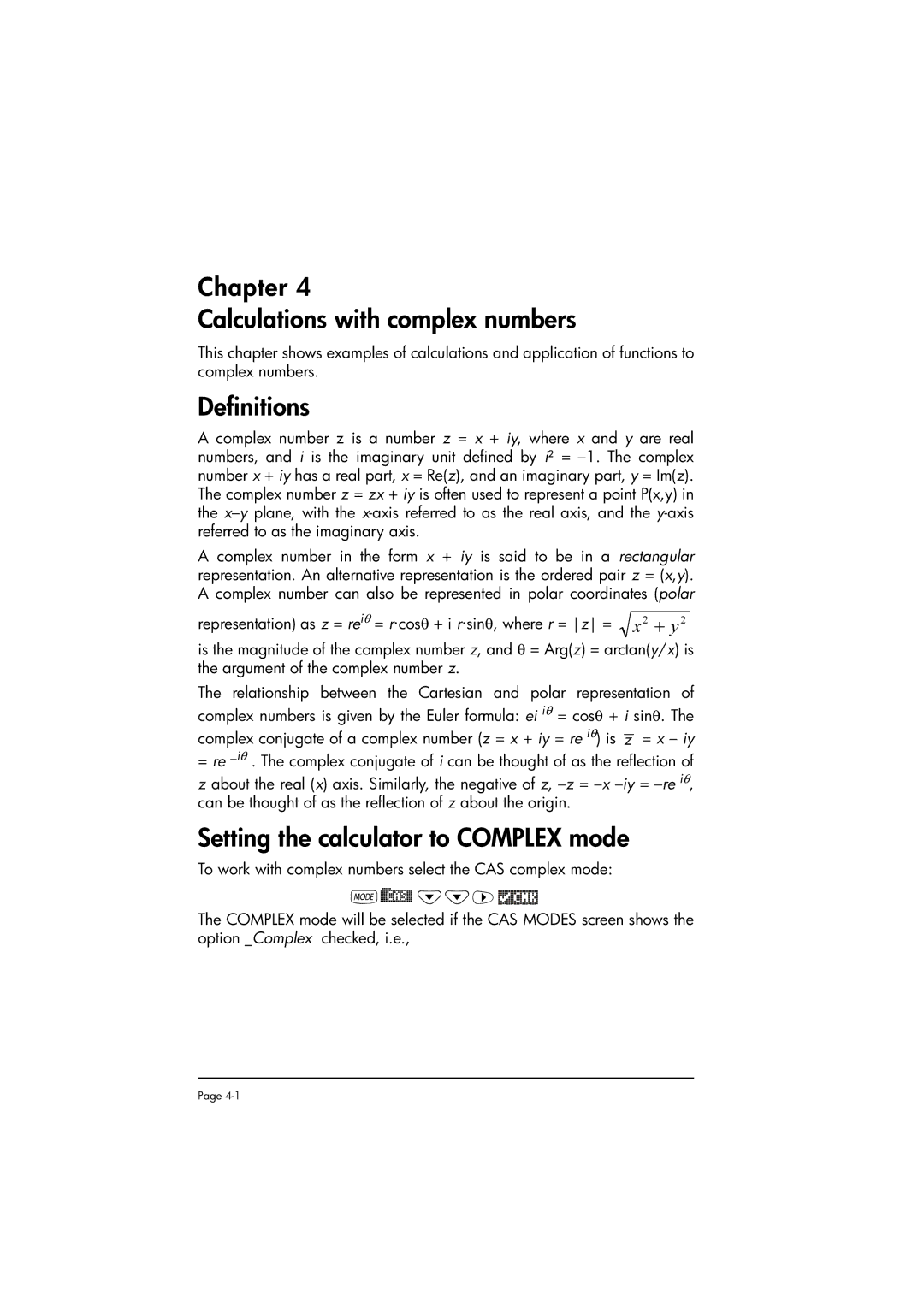
Chapter 4
Calculations with complex numbers
This chapter shows examples of calculations and application of functions to complex numbers.
Definitions
A complex number z is a number z = x + iy, where x and y are real numbers, and i is the imaginary unit defined by i² =
A complex number in the form x + iy is said to be in a rectangular representation. An alternative representation is the ordered pair z = (x,y). A complex number can also be represented in polar coordinates (polar
representation) as z = reiθ = r·cosθ + i r·sinθ, where r = z = x 2 + y 2
is the magnitude of the complex number z, and θ = Arg(z) = arctan(y/x) is the argument of the complex number z.
The relationship between the Cartesian and polar representation of complex numbers is given by the Euler formula: ei iθ = cosθ + i sinθ. The complex conjugate of a complex number (z = x + iy = re iθ) is z = x – iy = re
zabout the real (x) axis. Similarly, the negative of z,
Setting the calculator to COMPLEX mode
To work with complex numbers select the CAS complex mode:
H)@@CAS@˜˜™![]()
![]()
![]()
![]()
![]()
![]()
![]()
![]()
![]()
![]()
![]()
![]()
![]()
![]()
![]()
![]()
![]()
![]()
![]()
The COMPLEX mode will be selected if the CAS MODES screen shows the option _Complex checked, i.e.,
Page
